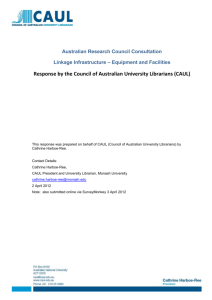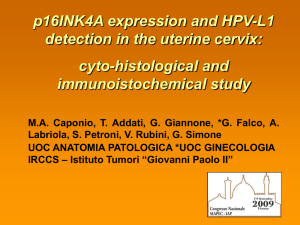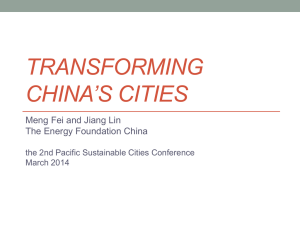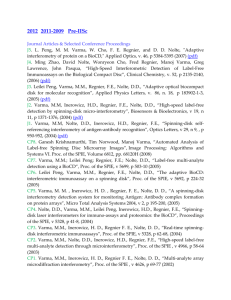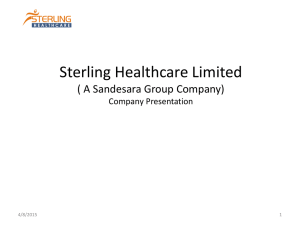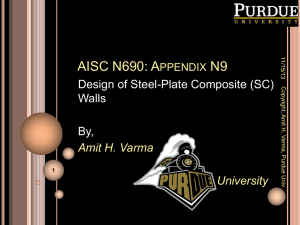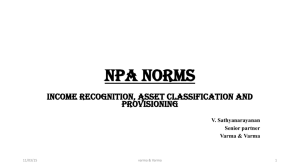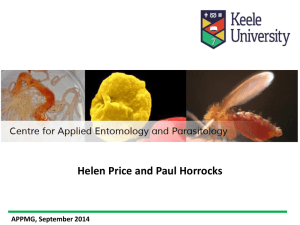Foreword Young Varma
advertisement
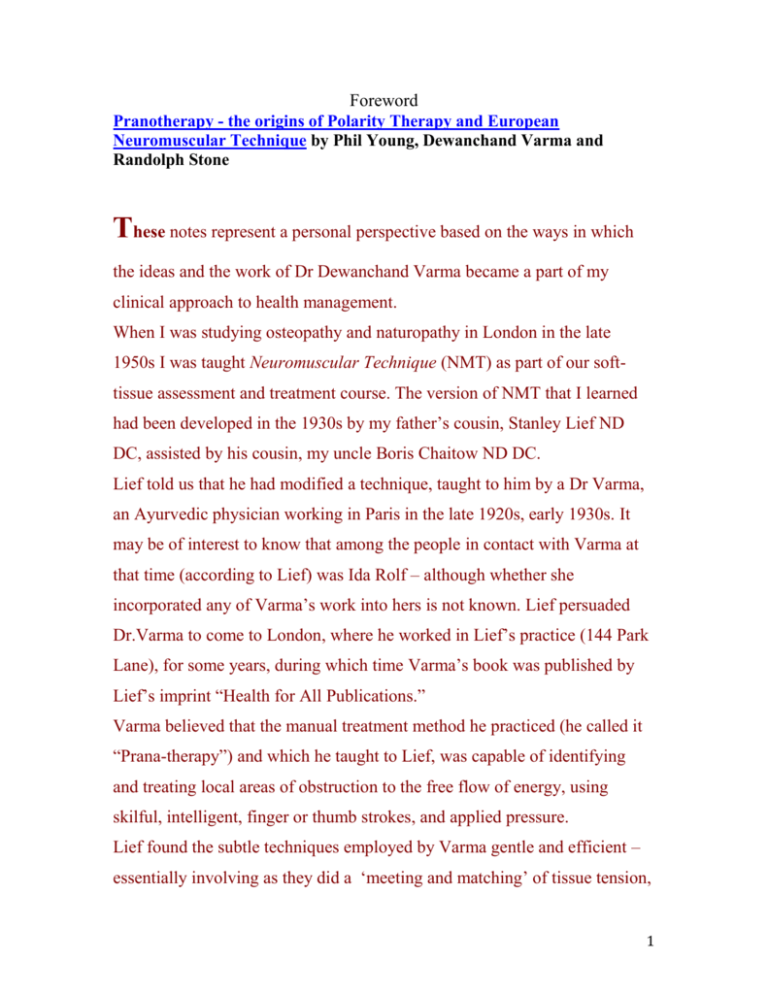
Foreword Pranotherapy - the origins of Polarity Therapy and European Neuromuscular Technique by Phil Young, Dewanchand Varma and Randolph Stone These notes represent a personal perspective based on the ways in which the ideas and the work of Dr Dewanchand Varma became a part of my clinical approach to health management. When I was studying osteopathy and naturopathy in London in the late 1950s I was taught Neuromuscular Technique (NMT) as part of our softtissue assessment and treatment course. The version of NMT that I learned had been developed in the 1930s by my father’s cousin, Stanley Lief ND DC, assisted by his cousin, my uncle Boris Chaitow ND DC. Lief told us that he had modified a technique, taught to him by a Dr Varma, an Ayurvedic physician working in Paris in the late 1920s, early 1930s. It may be of interest to know that among the people in contact with Varma at that time (according to Lief) was Ida Rolf – although whether she incorporated any of Varma’s work into hers is not known. Lief persuaded Dr.Varma to come to London, where he worked in Lief’s practice (144 Park Lane), for some years, during which time Varma’s book was published by Lief’s imprint “Health for All Publications.” Varma believed that the manual treatment method he practiced (he called it “Prana-therapy”) and which he taught to Lief, was capable of identifying and treating local areas of obstruction to the free flow of energy, using skilful, intelligent, finger or thumb strokes, and applied pressure. Lief found the subtle techniques employed by Varma gentle and efficient – essentially involving as they did a ‘meeting and matching’ of tissue tension, 1 in order to identify – and where necessary modify – freedom, or lack of freedom of motion within these tissues. Lief used his modifications of Varma’s approach – which he called NMT to assess and treat soft-tissue dysfunction, preparing joints for mobilisation or manipulation. And this is why we were taught NMT in our training at the then British College of Naturopathy and Osteopathy (now renamed as the British College of Osteopathic Medicine). By the time I was being trained the early work of Janet Travell MD was available and we began to speak of trigger points as one of our targets in NMT assessment and treatment. Simultaneously – in the late 1950s/early 1960s the work of Raymond Nimmo DC was becoming more widely known. Nimmo had worked in parallel with Travell (and subsequently another major researcher into myofascial pain, David Simons MD) in describing localised soft tissue changes that could generate local and distant pain – myofascial trigger points. When Nimmo came to the UK to teach briefly in the early 1960s, I was privileged to attend his classes, and found that his terminology was different from that of Travell, as were his treatment methods (which he called Receptor Tonus Technique) – but that they could usefully be harmonised clinically with Lief’s methods. This is what has happened, as NMT has continued to evolve in both the UK and USA. (Chaitow & DeLany 2011) Lief’s (European) modified version of Varma’s approaches, NMT, became a superbly effective soft tissue assessment and treatment protocol. The delicacy of the finger or thumb strokes allowing for extremely fine work to be performed – involving intelligent contacts that do not overwhelm restrictions, but insinuate (‘melting’) their way into them, teasing and 2 releasing, rather than aggressively forcing change – and it is this degree of subtlety that Lief learned almost entirely from Varma. In the USA Neuromuscular Therapy evolved in a direction that was far more focused on myofascial pain in general (influenced by Travell, Simons and Nimmo), and trigger points in particular. The modalities used in American NMT comprise soft tissue methods developed by practitioners of massage therapy, osteopathy, chiropractic, physical therapy, manual medicine, naturopathic medicine, and others. (Chaitow & Delany 2011) Varma’s visionary perspective- connective tissue connections In his book ‘The Human Machine and Its Forces’ Dr. Dewanchand Varma says: ‘We have discovered that the circulation of the nervous currents, slows down occasionally because of the obstruction caused by adhesions; the muscular fibres harden and the nervous currents can no longer pass through them. We have demonstrated effective and positive methods designed to restore nervous equilibrium which promotes the healthy circulation of blood, so that new tissues begin to be built up again’ In these words Varma seems to be discussing obstructions in the connective tissue – something that is recognised today as fascia research expands exponentially. Lief had become interested in fascia/connective tissue many years earlier than his introduction to Varma, via the work of a Scottish physician, Dr Andrea Rabagliati (1843-1930). In 1916 Rabagliati had published a book “Initis – nutrition and exercise” that advanced the theory that connective tissue congestion played a 3 significant part in the etiology of dysfunction and disease. Dr. Varma maintained that it was possible, using what he termed ‘pranatherapy’, to both palpate and normalise soft tissue restrictions that interfered with what he envisioned as the normal flow of energy (“prana”) around the body. Osteopathic practitioner and educator, Tom Dummer DO, who had studied NMT with Lief in the 1950s, has noted (in an unpublished monograph, dated 1991)): “Lief noticed the similarity between the theories and techniques of Dr Varma and Dr Rabagliatti and realized that they were virtually complementary to each other. It was from the synthesis of the two that neuromuscular technique eventually evolved.” Writing in the 1960s, Brian Youngs ND DO – who had studied and worked with Stanley Lief, observed as follows: “Connective tissue ……was largely ignored until recently, but has now been made the subject of close study in regard to its structure and functions. The ubiquity of connective tissue caused Rabagliatti to compare it to the ether as the medium for, as he termed it, 'the zoodynamic life force'. Through the connective tissues' planes run the trunks and plexuses of veins, arteries, nerves, and lymphatics. Connective tissue is the support for the structural and, therefore, functional relationships of these systems…… and as (NMT) operates primarily on connective tissue it will usually be concentrated at those areas where such tissue is most dense, e.g. muscular origins and insertions, especially the broad aponeurotic insertions …..connective tissue is, after all, ubiquitous” 4 This brings us right up to date, where research at major institutions is highlighting the role of fascia in both function and dysfunction, much of it echoing the work of Rabagliatti, Varma and Lief. For example, in relation to function McCombe (2001) has observed: “Fascia forms a gliding interface with underlying muscle [allowing] free excursion of the muscle under the relatively immobile skin. A plane of potential movement exists in the form of the areolar tissue layer, [apparently] lined with a lubricant, hyaluronic acid.” While in regard to dysfunction: “When fascia is excessively mechanically stressed, inflamed or immobile, collagen and matrix deposition becomes disorganized, resulting in fibrosis and adhesions – fascial thickening’ Langevin et al 2008, 2009)) “Densification occurs, involving distortion of myofascial relationships, altering muscle balance and proprioception” (Stecco et al 2009) “Binding occurs among layers, that should stretch, glide and/or shift on each other, potentially impairing motor function” (Fourie 2009) Chronic tissue loading occurs, forming ‘global soft tissue holding patterns’ (Myers 2009) All of these quotes could have come from Varma – and so I will requote his observation, which was 80 years ahead of this current research – even though the terminology belongs to a time long gone: ‘We have discovered that the circulation of the nervous currents, slows down occasionally because of the obstruction caused by adhesions; the muscular fibres harden and the nervous currents can no longer pass through 5 them. We have demonstrated effective and positive methods designed to restore nervous equilibrium which promotes the healthy circulation of blood, so that new tissues begin to be built up again’ Research As far as NMT’s efficacy - research validation is slowly appearing– for example: Nagrale and colleagues (2010) demonstrated the efficacy of NMT methods that were incorporated into a focused trigger point protocol Integrated Neuromuscular Inhibition Technique – INIT (Chaitow 1994). Spanish researchers (Ibáñez-García J et al 2009 ) showed that NMT (Lief’s method) and Strain/counterstrain were equally effective in the management of latent trigger points in the masseter muscle. And of course - in addition to Varma’s influence on NMT - there is also his connection with Polarity Therapy – about which I know too little to comment, but which appears to have been just as profound. There also remains a tantalising possibility that Varma may have influenced the work and thinking of Ida Rolf. We owe Dr Varma our thanks, and the republication of his book is a fitting tribute. References Chaitow L Delany J 2011 Clinical Applications of Neuromuscular Techniques. Volume 2: Lower Body (2nd edition). ChurchillLivingstone, Edinburgh Chaitow L 1994 Integrated Neuromuscular Inhibition Technique British Jnl of Osteopathy 13:17-20 6 Dummer T 1991 (unpublished) The Lief Neuromuscular Technique. Maidstone, Kent. Fourie W 2009 IN: Fascial Research II: Basic Science and Implications for Conventional and Complementary Health Care Munich: Elsevier Gmbh Ibáñez-García J et al 2009 Changes in masseter muscle trigger points following straincounterstrain or neuro-muscular technique JBMT 13(1): 2-10 Langevin H 2008.. In: Audette, Bailey (Eds.) Integrative Pain Medicine. Humana Langevin H 2009 Fascial Research II: Basic Science and Implications for Conventional and Complementary Health Care Munich: Elsevier GmbH McCombe D et al 2001 Jnl. Hand Surgery 26B:2: 89-97 Myers T 2009 Anatomy Trains, 2nd edition Edinburgh: Churchill Livingstone Nagrale et al 2010 Efficacy of an integrated neuromuscular inhibition technique on upper trapezius trigger points in subjects with non-specific neck pain. Jnl Manual & Manipulative Therapy 18(1):37-43 Rabagliatti A 1930, 2nd Edition. Original 1916) Initis Or Nutrition and Exercises C. W. Daniel Company, London, Stecco L Stecco C 2009 Fascial Manipulation: Practical Part. Piccin Italy Youngs B. 1963 The physiological background of neuromuscular technique. Br Naturopathic Jnl & Osteopathic Rev. 5:176–178 . 7

